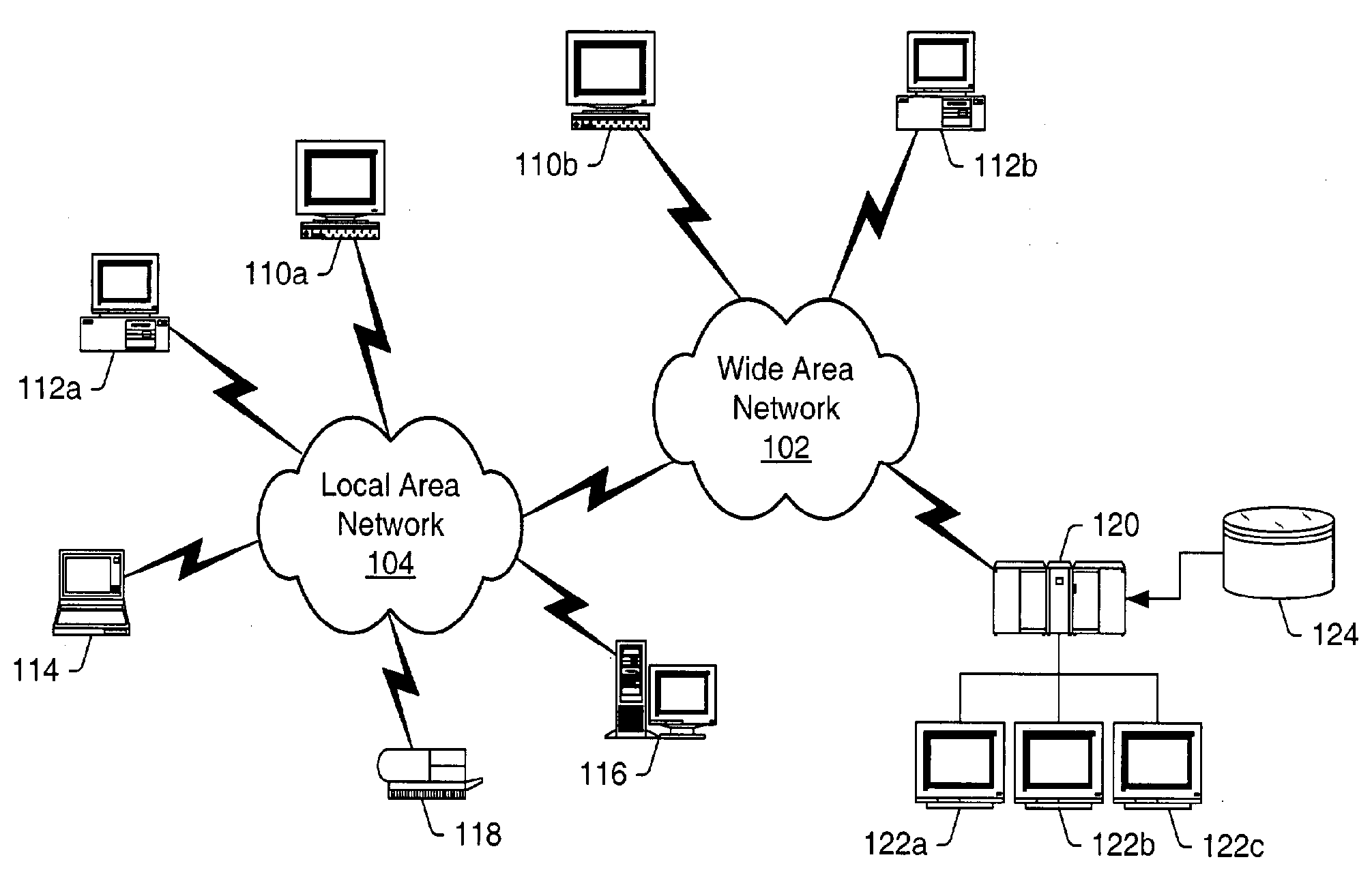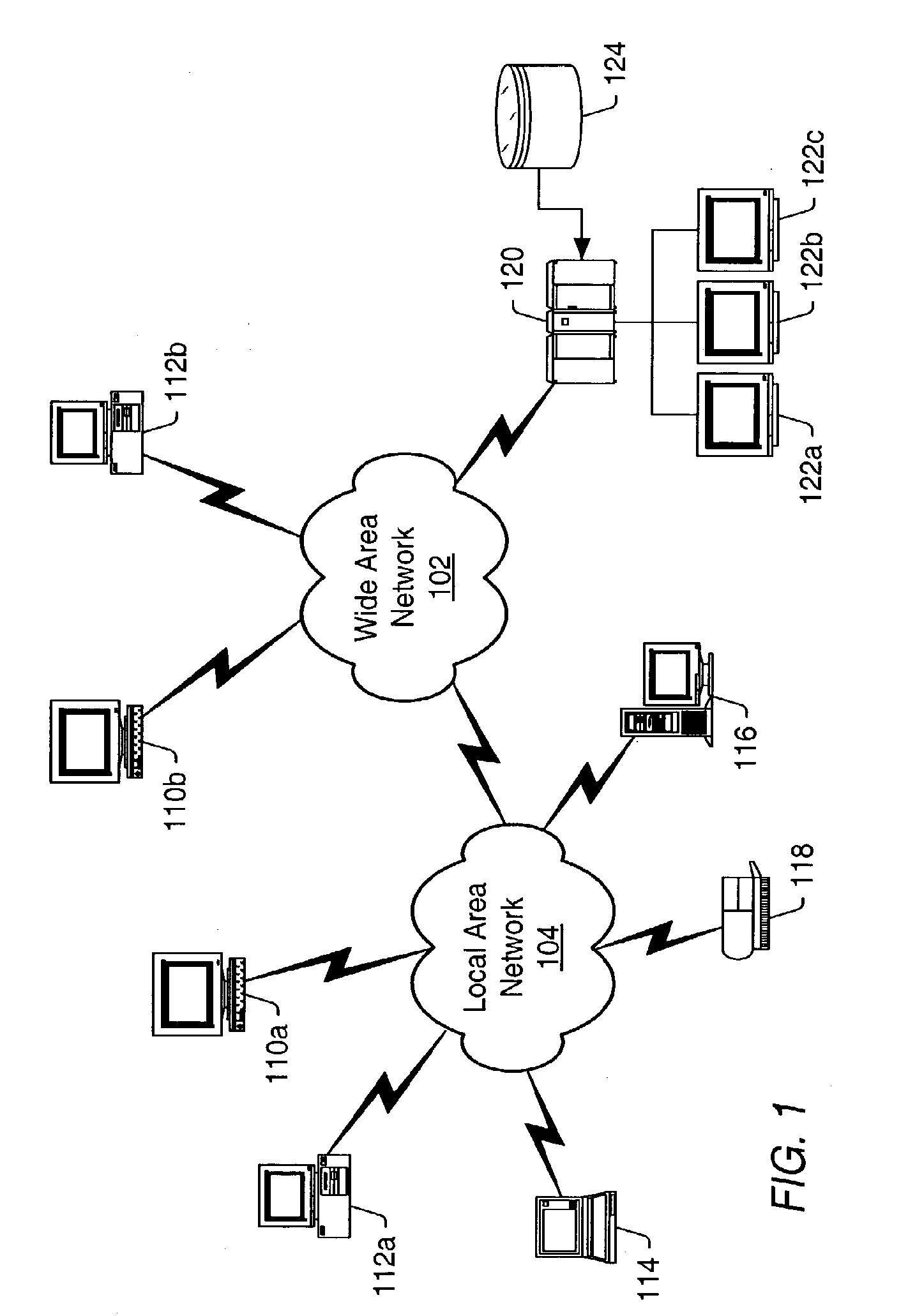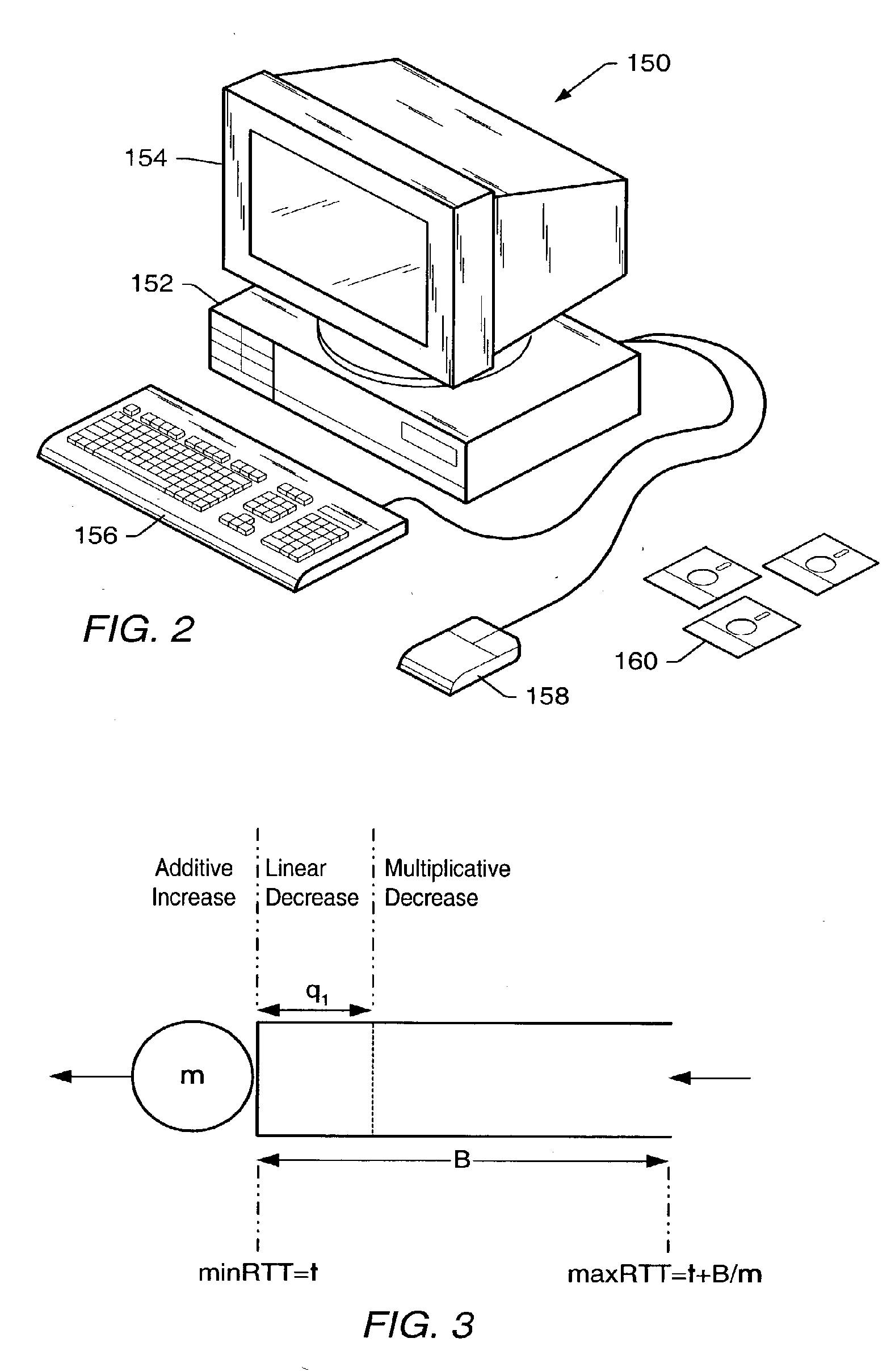Method and system for background replication of data objects
a data object and background replication technology, applied in the field of data transmission methods and systems, can solve the problem of a much smaller effective minimum congestion window, achieve the effect of reducing the risk of being too aggressive, facilitating the reaping of a large fraction of spare bandwidth, and simplifying applications
- Summary
- Abstract
- Description
- Claims
- Application Information
AI Technical Summary
Benefits of technology
Problems solved by technology
Method used
Image
Examples
experiment 1
[0141]Experiment 1: In this experiment, the number of background flows was fixed to 8 and the spare capacity, S, was varied. To achieve a spare capacity S, the bottleneck link bandwidth L was set to (1+S)*averageDemandBW, where averageDemandBW is the total number of bytes transferred in the trace divided by the duration of the trace. FIG. 4 is a plot the average latency of foreground packets as a function of spare capacity in the network. Different lines represent different runs of the experiments using different protocols for background flows. It can be seen that the Nice is hardly distinguishable from the router prioritization, whereas the other protocols cause a significant increase in foreground latency. Note that the Y-axis is on a log scale, indicating that in some cases Reno and Vegas increase foreground packet latencies by two orders of magnitude.
experiment 2
[0142]Experiment 2: In this experiment the spare capacity, S, of the network was fixed at 1. The number of background flows was varied. The bottleneck link bandwidth, L, was set to twice the bandwidth needed by demand flows. FIG. 5 is a plot of the latency of foreground packets versus the number of background flows. Even with 100 background Nice flows, the latency of foreground packets is hardly distinguishable from the ideal case when routers provide strict prioritization. On the other hand, Reno and Vegas background flows can cause latency of demand flows to increase by orders of magnitude. FIG. 6 is a plot of the number of bytes successfully transmitted by the background flows. A single Nice background flow reaped about half the spare bandwidth available under router prioritization. This background throughput improved with increasing number of Nice background flows but remained below router prioritization. Note that although Reno and Vegas obtained better throughputs, even for a ...
experiment 3
[0144]Experiment 3: In this experiment the effect of the Nice threshold and fraction parameters was tested. FIG. 7 shows the latency of foreground packets as a function of the threshold for the same trace as above, with S=1 and 16 background flows. As the threshold value increased, the interference caused by Nice increased until the protocol finally reverted to Vegas behavior as the threshold approached 1. Nice demonstrated low interference over a large range of threshold values, suggesting that the threshold value may not need to be manually tuned for each network. Similarly, no significant change in foreground latency was found as the trigger fraction was varied from 0.1 to 0.9.
PUM
 Login to View More
Login to View More Abstract
Description
Claims
Application Information
 Login to View More
Login to View More - R&D
- Intellectual Property
- Life Sciences
- Materials
- Tech Scout
- Unparalleled Data Quality
- Higher Quality Content
- 60% Fewer Hallucinations
Browse by: Latest US Patents, China's latest patents, Technical Efficacy Thesaurus, Application Domain, Technology Topic, Popular Technical Reports.
© 2025 PatSnap. All rights reserved.Legal|Privacy policy|Modern Slavery Act Transparency Statement|Sitemap|About US| Contact US: help@patsnap.com



